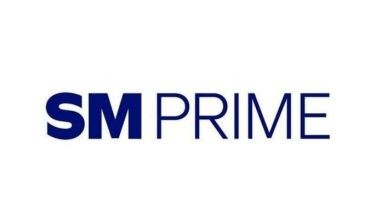Are you at par?
Equal pay for equal work, equal tax for similarly situated persons; this is an ideal for an imperfect economy striving for perfection. This kind of outlook of equality is reflected in the mindset of the Bureau of Internal Revenue (BIR) as it strives to deal with its main concern – to meet its high revenue target and address tax leakage or schemes applied by some taxpayers and tax practitioners in reducing tax payments to the government.
“How is the concept of equality involved?” one might ask. This concept of equality may be seen in the BIR’s plan to establish a standard for taxpayers in the same line of industry to have the similar business performances, which performances include the amount of revenues and tax payments.
This plan revolves around Revenue Memorandum Order (RMO) No. 05-2012, dated March 29, 2012. RMO No. 05-2012 acknowledges that the Philippine ratio of VAT collection does not meet the international norm rate. It has concluded that the calculation of the VAT leakage or tax gap is imperative to determine how much of the tax base is effectively captured.
This is where benchmarking comes in. The BIR, through RMO No. 05-2012, revived its Performance Benchmarking Method as a measure to detect leakages and improve collections on VAT, income tax and other taxes. The objective of RMO No. 05-2012, similar to its predecessor RMO No. 04-2006, is to prescribe the updated guidelines in the conduct of taxpayer profiling and provide an effective tool in addressing collection problems, plugging tax leakage and implementing a risk-to-venue based audit and enforcement activities.
The benchmarking process under RMO No. 05-2012 is a cycle where the BIR gathers data from taxpayers of a particular industry for tax profiling, conducts and establishes an acceptable benchmark, notify taxpayers concerned, evaluates taxpayers’ response, analyses and prepares reports/recommendations, and applies enforcement actions.
Taxpayers’ VAT returns, income tax returns with attached financial statements will be the data gathered by the BIR. The data gathered will then be classified according to industry using the Philippine Standard Industry Code.
The BIR will thereafter compute for the Gross Profit Rate, Income Tax Rate and VAT Rate. The gross profit rate is derived by dividing gross profit over gross sales. The VAT rate is computed by dividing the total VAT due/payments over gross sales subject to VAT, while income tax rate is computed by dividing the income tax due/payment over total revenue.
Such ratios will then be analyzed, taking into consideration the normal industry profit margin, the VAT and income tax compliance and the sales volume or revenue. This will be the BIR’s guide in choosing models from the taxpayers’ list whose average tax rate of compliance will be computed. The result of this process will be evaluated and the benchmark established.
The BIR will proceed to notify taxpayers who fall below the established benchmark, through the issuance of Benchmarking Notices. The taxpayer recipient of the Benchmarking Notice is asked by such notice to rectify its tax returns and improve tax compliance. This notice will require the taxpayer to explain within 15 days from receipt of said notice the reasons for failure to measure up with the benchmark. The BIR will evaluate such reasons and make recommendations/reports on the responses made.
If the BIR finds the explanation to be unsatisfactory, the BIR may issue a Letter of Authority for the audit of the taxpayer or subject the taxpayer to other enforcement activities such as surveillance, Cash Register Machines/Point of Sale post evaluation, Oplan Kandado, and inventory stocktaking. On the other hand, satisfactory responses of the taxpayers may be used by the BIR to evaluate, compare and adjust the industry benchmark.
In the advent of the VAT Audit Program of the BIR under the recent RMO No. 19-2012 and RMO No. 20-2012, it is advisable for taxpayers to study the benchmarking process under RMO No. 05-2012 for the reason that the results of the benchmarking programs are one of the criteria in the investigations to be conducted by the BIR.
Therefore considering the attention given by the BIR to the benchmarking process, taxpayers need to review their tax compliance practices and reporting. They may need to strengthen their substantiation on all transactions to support replies to any Benchmarking Notices sent by the BIR. The substantiation will prepare them for any audit that may later arise.
A more enterprising approach is for taxpayers to increase their ties with other players in their industry so that a concrete and unified stand may be established in their industry to address issues on the benchmark set by the BIR.
Clearly, there is a need for taxpayer to be vigilant, internally and externally, to ensure that the process of benchmarking and the final benchmark set by the BIR will be truly fair and equal.
- Latest
- Trending

























